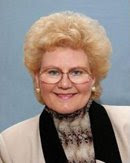
I found this article, which is great. I've really wanted to start making wine. I found these Free Wine Making Kits which is a perfect way to start.
From The Buffalo News:
Cynthia Jarosz, of Lackawanna, started making red wine at home about a year ago, after a doctor suggested her husband, Dennis, drink more of it for health reasons.
“We’d never been wine drinkers,” she says. “Neither of us really cared for wine, but now we like it.” And her hobby, she is quick to admit, is addictive.
“I’ll ferment anything now,” said Jarosz.
On the other hand, Art Hook, of Clarence, loved wine from the start and has been making it at home for 39 years. Hook has a cellar full of smartly labeled wines from Chardonnay to Pinot Noir and enjoys at least a glass or two a day.
“I haven’t bought a bottle of a wine in a liquor store for years,” he says.
Truth is, in Western New York at this time of year, the barrels and carboys and pails are a-bubbling all over, reminding us of a scientific miracle: When the sugar in crushed grapes (and other fruit) is exposed to the yeast in the air, it turns to alcohol, thus creating a beverage as old as time itself.
Of course, there are various ways to bring about that transformation. You can, like Jarosz, buy a wine kit that contains grape juice concentrate, yeast, sometimes clarifying agents, and then you can can buy other kits that provide the reusable equipment like fermenters, and siphons, air locks, corkers and hydrometers to measure specific gravity.
Then you just follow directions to mix the ingredients and get down to work, racking (siphoning off clear juice), fermenting, bottling and corking along the way.
Get A Free Wine Making Kit Here
Kits, which cost anywhere from $59 to $160, make things easy. Plus, they provide almost instant gratification. Jarosz, for instance, took a double gold medal at the Home Winemaking Competition at America’s Fair in August for her Valpolicella. (She took silver medals for her Luna Rosa medley and Raspberry wine, as well.)
There are other routes, however. Like Art Hook, you might work from the fresh grape juice that is now being shipped in plastic pails from California vineyards. He says it’s a much easier and speedier method than the one he used when he made wine with his grandfather, who used grapes.
Today, many local winemakers, such as John Iacono of Lancaster, start with the fruit. Much of it is shipped here in 10- pound boxes from California.
He’s been doing it for 42 years, using the methods he learned when he was a boy in Italy. He buys the Muscat, Zinfandel and Alicante grapes, and “grinds” or crushes them before siphoning the mix into barrels to let the natural yeast rip. The skins and stems go to a local priest who makes grappa, and by April, a zesty high-alcohol wine is the result.
Nobody knows how many home winemakers there are in the area, but most wine suppliers say that the number is growing.
Bob Mercurio, the CEO of James Desiderio & Sons on Bailey Avenue, suppliers of both grapes and juice, says that the next few weekends will be busy.
And though there are still a couple hundred people who are still grinding, squeezing and barrel fermenting, he says, “the real growth is in the juice. “We see juice selling 10 percent more each year,” Mercurio says, adding that it makes wine making so easy that the hobby now is becoming popular among people of all ages.
“There are a lot of young professionals who make wine now,” he said.
According to Becky Dyster, who has owned Niagara Tradition Home Beer and Wine Supplies on Sheridan Drive in Tonawanda for 17 years, there are at least two reasons why home winemaking is so popular in this area: “We have a strong group of of Italian/American immigrants who were always interested in the subject, plus a bunch of fruit and grapes that grow here,” she says.
Dyster, who is herself a winemaker, says there is also a money-saving aspect.
“You can make a pretty decent wine from vinifera grapes from $1 to $4 a bottle once you’ve made the initial investment in equipment,” she points out.
But Mike Ditanto of Ten Thousand Vines, on Camp Road in Hamburg, thinks there’s much more than money or economics involved. Nostalgia, he says, plays a big role.
Nostalgia and love.
“It is a heritage thing. People remember going down into grandpa’s cellar and looking at the wine press,” says Ditanto. “I’m actually surprised how many younger people want to make wine with their fathers. It has become an intergenerational thing.”
Found Here.
Free Wine Making Kits here!

No comments:
Post a Comment